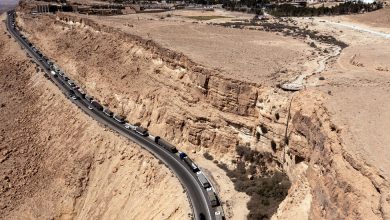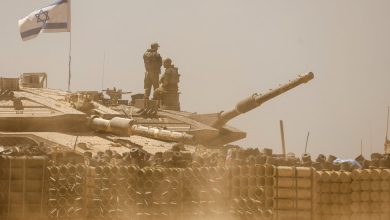Don Christopher, Who Turned Lowly Garlic Into a Staple, Dies at 88

Don Christopher, a California farmer who turned the humble, much-maligned bulb of garlic into a staple in millions of American homes and elevated the sleepy town of Gilroy into the garlic capital of the world, died on Dec. 12 in Gilroy. He was 88.
His grandson Ken Christopher, the executive vice president of Christopher Ranch, the family business, confirmed the death, at a hospital.
As prevalent as garlic is in American cooking today, for much of the 20th century it was considered an exotic, even déclassé, ingredient. Often called the stinking rose, it was found occasionally in Italian restaurants and frequently in vampire-hunting kits, but rarely in home kitchens — though there might have been a dusty jar in the back of the pantry, its contents dehydrated or packed in preservatives.
“It used to be that a lot of people thought only the poor ate garlic,” Mr. Christopher told The Associated Press in 1994.
That changed in the 1970s, as an influx of Asian and Latin American immigrants began to alter America’s demographics, and with them the country’s culinary landscape. Around the same time, health-conscious eaters, newly alert to the risks of salt, turned to garlic as an efficient, flavorful substitute.
It helped that Mr. Christopher was already garlic’s ideal booster. He loved it, and he believed in it as a superfood — with all sorts of medicinal and health benefits — long before anyone used that term. It’s unclear who first called him the Garlic King, but the nickname fit.
He was especially big on domestically grown fresh garlic: He used an heirloom variety, and even today Christopher Ranch employs seeds descended directly from its first planting. In 1978, he and several of his neighbors founded the Fresh Garlic Producers Association, and the next year he and two friends created the Gilroy Garlic Festival.
Christopher Ranch was far from the first garlic farm in Gilroy. The town, about 80 miles south of San Francisco, was already renowned for its pungent bounty, so much so that the comedian Will Rogers once said Gilroy was “the only town I know where you can marinate a steak by hanging it on the clothesline.”
Mr. Christopher and his friends thought they would draw a few thousand people to the festival; instead, more than 15,000 came. Within a few years it was attracting more than 100,000 attendees, who noshed on garlic bread and sipped garlic wine, made with crops donated by Christopher Ranch. They watched “Iron Chef” contestants and Food Network stars cook up garlic-centric dishes and posed for photos with Herbie, the festival’s mascot.
The festival’s success, which earned Gilroy the nickname Garlic Capital of the World, reflected the boom in sales nationwide. From 1975 to 1994, America’s annual garlic production more than tripled, to 493 million pounds from 140 million.
“We’ve made garlic fun,” Mr. Christopher told Linda and Fred Griffith for their 1998 book, “Garlic Garlic Garlic: More than 200 Exceptional Recipes for the World’s Most Indispensable Ingredient.” “You’ve got garlic festivals everywhere. And all those health considerations. It’s always in the news.”
Donald Clair Christopher was born on Aug. 4, 1934, into a family of farmers in San Jose, Calif. His paternal grandfather, Ole Christopher, was a Danish immigrant who settled south of the city to raise plums, which he dried into prunes. It was good, steady work, and Don’s father, Art, joined him. His mother, Clara Ann (Hansen) Christopher, was a homemaker.
Along with his grandson Ken, Mr. Christopher is survived by his wife, Karen Christopher; his brother, Art; his sons, Robert and Bill; his stepchildren, Erica Trinchero, Suzie Cornia, Vince Rizzi and Kevin Rizzi; eight other grandchildren; and four great-grandchildren.
Don wanted to be a farmer like his father, but he found prunes dull. And he wanted his own land, but the ground around San Jose was already suburbanizing. After he studied business administration for a few years at San Jose State University, he and his brother headed south, to Gilroy, where in 1956 they bought Christopher Ranch’s first acreage. They planted lima beans, sugar beets and, as an afterthought, 10 acres of garlic.
The man who sold them the land, Mr. Christopher later remembered, told him, “Young man, I’m glad someone is coming in who wants to be a farmer.”
By the 1990s Christopher Ranch was the country’s largest grower of garlic, with thousands of acres planted around Gilroy and in the San Joaquin Valley to the east. Mr. Christopher had built his family farm into a vertically integrated business, growing, processing and trucking millions of pounds a year.
As demand grew, Mr. Christopher branched into all sorts of garlic packaging — peeled, pickled, pesto; chopped, crushed and roasted.
Christopher Ranch, and the garlic industry in general, faced headwinds in the 1990s, as cheap imports from overseas, in particular China, undercut sales. The company’s output dropped by about a third, to 45 million pounds annually.
As a hedge, Mr. Christopher started importing about 10 percent of his garlic to package into low-cost, off-brand products. He also started to boost his Christopher Ranch brand as American-grown heirloom produce, with unique, full flavors.
The company’s dealings in China brought negative attention in 2018, when Netflix released a segment of the documentary series “Rotten” about “big garlic,” with Christopher Ranch at the center. It accused the company of buying produce from a Chinese company that used forced labor.
Christopher Ranch pushed back, and even considered suing. A Department of Commerce investigation found no evidence to support the charges.
Then, in 2019, a gunman opened fire at the Gilroy Garlic Festival, killing three people and wounding 17. The political and financial consequences of that tragedy — several families sued the festival, and the city raised its insurance requirements — combined with the pandemic, forced the event’s organizers to cancel it in 2022 “for the foreseeable future.”
By then Mr. Christopher had largely stepped aside from running the business, leaving it in the hands of his sons and grandson.
He didn’t need to worry about its future. Ken Christopher said the company expects to set a sales record in 2022: 105 million pounds, or more than one billion bulbs.




